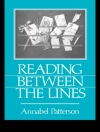This book examines Thomas Hardy’s writing in both prose and poetry, focusing on issues of perception, ‘being’, class and environment. It illustrates the ways in which Hardy represents a social world which serves as a ‘horizon’ for the individual and explores the dialectic between the perceptible world and human consciousness. Ebbatson demonstrates how, in Hardy’s oeuvre, modern life becomes alienated from its roots in rural life – individual freedom is achieved in works like Tess of the d’Urbervilles, Jude the Obscure or The Woodlanders at the cost of personal insecurity and a deepening sense of homelessness. However, this development occurs against the marginalisation of dialect forms of speech. This book also explores how Hardy’s impressionist vision serves to undermine the prevailing conventions of plot structure.
Innehållsförteckning
1. ‘The Bride-Night Fire’: Hardy & the Voice of the Folk.- 2. A Pair of Blue Eyes: The Cliff-Scene and the Literary Sublime.- 3. Moments of (Technological) Vision.- 4. ‘The Withered Arm’ and History.- 5. (Un)Binding the Sheaves: Selfhood and Labour in Tess of the d’Urbervilles.- 6. ‘The Open’: Hardy and Jefferies.- 7. The d’Urberville Family Portraits: Faciality and Identity.- 8. Tess of the d’Urbervilles and the Fin de Siècle.- 9. Wayfaring.- 10. Hardy’s Lyric Voice: ‘Beeny Cliff’.- 11. ‘The Face at the Casement’: Window Patterns in Hardy’s Poetry.
Om författaren
Roger Ebbatson is Visiting Professor at Lancaster University and Emeritus Professor at University of Worcester, UK. He is the author of numerous books, including Literature and Landscape (2013) and Landscapes of Eternal Return (2016).












